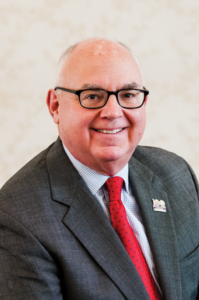The purpose of any union is to build power so that its members can achieve economic fairness in the workplace and justice in the political realm. Coming out of the pandemic, this Federation administration gave itself a good institutional shaking, like a Labrador Retriever coming in from a downpour, with exactly that purpose in mind.
We’ve reignited the Organizing Services Department, which has focused on a number of local and national campaigns over the past several months, with plans to build up the department even more. We’ve added a research arm to the Federation, to support organizing and contract campaigns. The Symphonic Services field negotiators were put back on the road to assist locals with their symphonic bargaining. So busy have they been that plans are now afoot to add more staff resources to keep pace with demand. Recently, President Gagliardi added a negotiator to the Theater/Touring Department to assist locals that need help with their local theater contract negotiations. Following the retirement of the late Alfonso Pollard as our legislative director in DC, we hired Ben Kessler away from the National Endowment for the Arts and he has elevated our collective voice in the US Capitol to new levels.
All of this is to illustrate that building power toward economic fairness and justice in the political realm is in the forefront of the AFM leadership’s collective mind, and always shall be.
And yet, a vast swath of professional musicians in the US and Canada operate in an economic realm not directly connected to traditional rank-and-file union organizing in the workplace, who are not directly affected by contract campaigns or political activism. They are self-produced, indie or freelance musicians for whom every one of their dollars spent is measured against the resulting benefit. The value of their membership in this union is put to a consumer test—a difficult and complex challenge for a labor union whose primary purpose is to aggregate and channel its members’ power for collective benefit.
Notwithstanding this primary imperative, meeting that consumer test is an important part of the musicians’ union’s fabric. The pages of this magazine often display a variety of valuable benefits and services that are available to all members, and they are so ever-present that they might sometimes be accused of hiding in plain sight.
Web Hosting: GoPro Hosting—Starts at $19 per year for 100 MB disk space. We handle domain registration, transfers and renewals, web hosting, and tech support, on unlimited bandwidth. www.GoProHosting.com.
Sell Your Tunes: GoPro Tunes—Sell your tracks and albums recorded on AFM contracts. 100% of net sales goes to you. And it’s non-exclusive; sell your tunes anywhere else, online or offline. www.GoProTunes.com.
Book Your Group: AFM Entertainment—The AFM’s booking agency, connecting union musicians with gigs. Register your group at AFMEnterntainment.org.
Public Service Gigs: MPTF—Music Performance Trust Fund has money to support gigs that are free and open to the public. Ask your local officer how to get paid with MPTF.
Musical Equipment and Liability Insurance—US and Canadian members have access to competitively priced insurance for all your business, instruments, and gear, both at home and on the road. www.afm.org/insurance-products.
Gig Contract Enforcement: 1-800-ROADGIG (US) / 1-800-INFOFED (Canada)—On the road and get stiffed by a club, lounge, or other client? If the gig was covered by a contract and a copy was filed with the local where the gig was, call one of the numbers above, and within 24 hours, a Federation official will get on the case and work toward a resolution.
Cellular Service—Union members in the US and Canada can get significant discounts with Bell and Rogers in Canada and AT&T in the US. For more info, go to UnionSavings.ca in Canada, and UnionPlus.org in the US.
Union Discount Programs—Take a look at other savings on financial services, travel, shopping, and insurance for union members and their families. Visit UnionSavings.ca (Canada) and UnionPlus.org (US).
To find other services, discounts, and resources available to AFM members, visit members.afm.org > Document Library > Member Benefits and Services folder.
Read More

